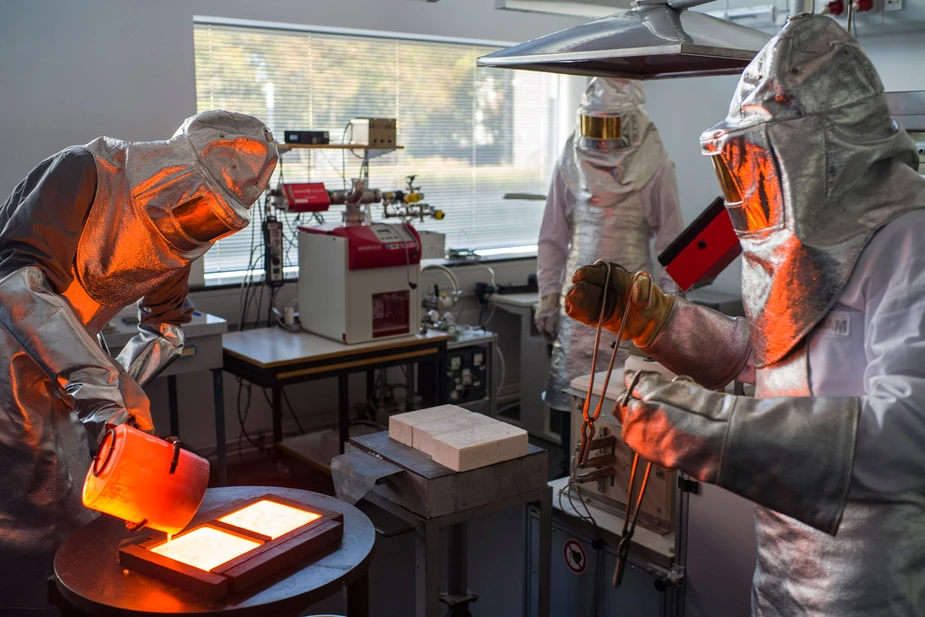All You Need Is Glass
Scientists from BAM Adlershof are researching unbreakable glass
Ralf Müller starts waxing lyrical when he talks about glass. “It’s such a fascinating material. Much lighter and even more robust than steel,” says Müller, who is head of the Department 5.6 Glass at the BAM Federal Institute for Materials Research and Testing. “In theory!”, he adds. Müller and his team are working towards approximating this theoretical robustness. The BAM is researching how to make glass more break-proof as part of a priority programme of the German Research Foundation (DFG) in cooperation with the Technical University Clausthal and the Leibniz University Hanover.
The Egyptians and Mesopotamians invented a method to make glass 3,000 to 4,000 years ago. However, the Stone Age men also used natural-occurring glass as knives and scrapers. It was a long way until the first automatic glass container machine was invented in 1903. Best known as the material for windows and containers, glass is now used in unprecedentedly diverse ways. Glass pipes are used as bioreactors for growing algae, glass fibre reinforced polymers create new possibilities for shipbuilding and wind turbines, and glass makes smartwatch displays more scratch resistant. Since 2016, specialised glass products protect the camera of the Juno probe, while it collects images of Jupiter from space. Glass is an indispensable material for many applications: electrical components, displays of smartphones, televisions, and computers, building materials, technical glass products, and even implants. “All you need is glass,” says Ralf Müller. “It’s versatile, heat-resistant, dimensionally stable, and malleable. Used in packaging, it’s gas-proof, tasteless, highly compatible with other materials, and easily recyclable.” It only has one downside: it breaks.
Despite the high durability of glass, it is difficult to exploit these strengths due to its weak resistance to surface damage. Water has a decisive influence on glass damage. Environmental humidity, or the water used during the glass production process, for example, can affect the growth of tiny cracks that may turn into bigger problems. A DFG project is now bringing together experts in glass strength, glass structure, and the solution and diffusion of water in glass to examine the effect of water on crack propagation. Their aim is to derive structural design principles from their research for developing break-proof glass.
“We examine crack propagation in glass and the effect that water and glass composition have on it,” says Tina Waurischk, a PhD student at the institute. She has set up a machine which helps to examine the slow growth of cracks in a range of environments, including a vacuum. One of her tasks is to insert glass probes into the machine and test their tensile strength.
“We know very little about the general influence of glass composition on crack propagation,” says Ralf Müller. The fact that glass cracks grow more rapidly in high humidity is nothing new, but many previous studies have concentrated on technical glass. “Although we’re conducting basic research here, our focus is on everyday glass products,” says Müller. Some procedures exist to make glass stronger, but they are often too expensive and impractical for everyday products. Developing lighter and more durable water bottles, for example, could save material resources, facilitate transportation, and reduce energy consumption, making them more environmentally friendly. Moreover, ultra-strong, crack-free glass, for example, could be used to build very large, break-proof structures in photovoltaics. Müller smiles: “In theory, a glass fibre that is only a few millimetres strong can hold a ton of steel. But the battle against nature isn’t easy.”
By Rico Bigelmann for Adlershof Journal
